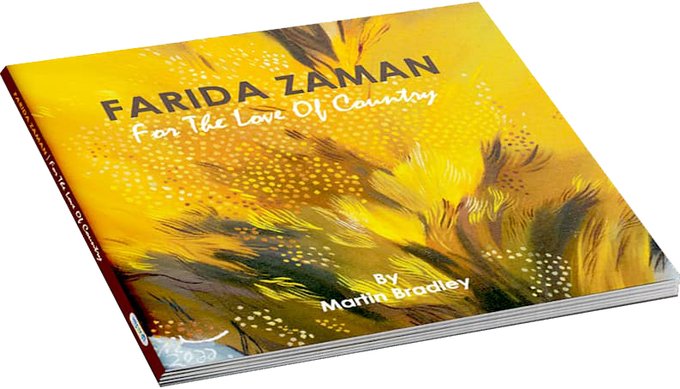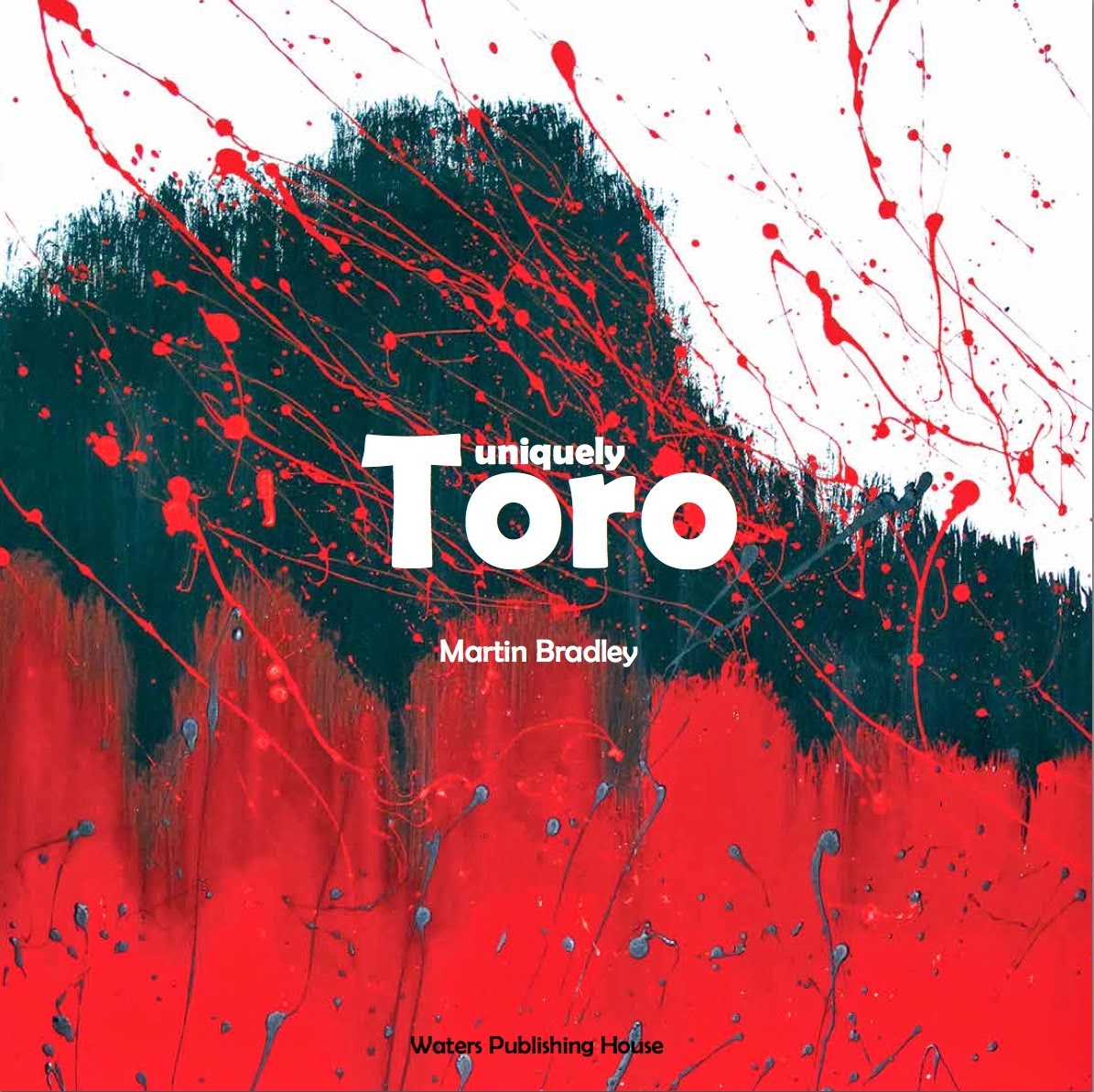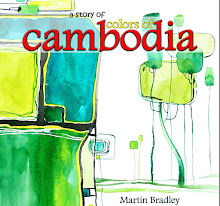Thursday 27 November 2014
Monday 24 November 2014
No Photography
It was Sunday, in some countries a traditional day for visiting art galleries and museums. We drove the half hour from our home to Malaysia's National Art Gallery, now cleverly renamed the National Visual Arts Gallery, to see a retrospective exhibition by one Malaysia's elder arts statesmen - Choong Kam Kow. We arrived at lunchtime. We hadn't eaten.
The National Visual Arts Gallery's eternally leaky roof had been replaced, but the cafe had vanished. In its stead was a miniature National Portrait Gallery. We enquired, in the diminutively sparse bookshop outside the main building, but were told that the gallery had no cafe, nor restaurant, anymore. We were advised to drive out from the Gallery's grounds, eat or drink our fill, and drive back. It just didn't seem right somehow.
There was obviously no chance of a sudden meeting of the like minds of art lovers in the gallery cafe then. No arts bantering, no half serious discussions about art, literature and the current state of philosophy ala Parisian cafe life. The social side of arts was quite obviously not being catered for, in Malaysia's National Visual Arts Gallery.
Before leaving, and despite vigorously rumbling tums, we decided to seek an art book. One of my friends from China had held an exhibition at the gallery, and a book had been produced. I am helping him with some research and sought to purchase his book. The place laughingly referred to as a book shop had fewer art books than most Malaysian book shops, and they have a bear minimum. Many of the books published by the gallery rubbed shoulders with a meagre amount of tubes of paint, other gear more suited to a craft shop and a naked postcard stand. Behind a counter more resembling a miniature fortress stood a bemused sales clerk, who was quite obviously unused to visitors. The majority of the minuscule selection of books were poorly printed (digital printing), while others were 'perfect bound' which is notorious for books falling apart without to much effort. The book we sought, published by the Gallery itself was, of course, out of stock.
Sitting in a dour looking Secret Recipe franchise, some ten minutes from the Gallery, forking a nondescript Malaysian Cornish Pasty into ravenous mouths, we seriously thought about forgoing the pleasure of the eminent artist, and not going back to the National Visual Arts Gallery, but we had left our car there, and were driven by one of our Chinese business friends to seek sustenance.
Pakhruddin and Fatimah Sulaiman (of Malaysian sculpture collection fame) were in the National Visual Arts Gallery foyer when we arrived back after lunch. I didn't get the opportunity to greet them as they were obviously engaged in conversation. So, it was onward to the show…..
And it was about here in my writing, that had I intended to write my review of Choong Kam Kow’s retrospective exhibition. It is absent, due to one zealous gallery guard who prevented me from taking non-flash photographs.
There is no review.
I can never quite understand why some galleries in Malaysia prohibit the taking of photographs. I could understand if they had postcards of the displayed works, and wanted to protect their sales or, like some, sold slides (transparencies) of said artworks for the same reason. Or, and big or, if the gallery sold posters, and again wanted to protect their merchandising, but no. The National Visual Arts Gallery sells very few merchandising items. There were no postcards, transparencies or posters available for Choong Kam Kow exhibition, not even a catalogue or book. I could even understand if signs said no ‘flash’ photography, though there is compelling evidence from 2013, by Dr Martin H Evans (http://people.ds.cam.ac.uk/mhe1000/musphoto/flashphoto2.htm)
that flash photography does no harm to objects in galleries.
that flash photography does no harm to objects in galleries.
Galleries that do not allow photography do themselves a great disservice. In our Social Media crazy age, selfies with an artwork backdrop do more good, via free advertising, than all the paid advertising put together. Casual shots of artwork shoot off across cyberspace within seconds, drawing great interest from recipients, potential visitors to an exhibit. No selfies, no causal shots, no free advertising and the huge gallery opens for no one or, like the Sunday we visited, to a bear handful of people who dropped off the tour bus.
Wednesday 19 November 2014
Luo Qi China's Quest Come of Age
International, but Chinese born, artist Luo Qi, from the renown art city of Hangzhou, the largest city of Zhejiang Province in Eastern China, has already established himself on the world’s stage as an academic, poet, writer and avant garde artist. In his artistic endeavours, Luo Qi investigates Chinese calligraphy with his dynamic artistic movement Calligraphyism (aka Characterism). Luo Qi was taught at, and has lectured in, the well established China Academy of Art (est. 1928), Hangzhou, beside the stunning phenomenon of the city’s West Lake. Over many years Luo Qi has developed a fresh way of inquiry into pictorial pictogram representations, which bind the inquisitive viewer to the object, and yet which also remain referential to historic Chinese pictograms and, in particular, those carved into ancient oracle bones (for divination, used 1500 to 1000 BCE).
In Derridean terms, artist Luo Qi deconstructs the familiar concept of Chinese pictograms, where each pictogram reveals a single thought rather than a collection of letters from an alphabet, and reconstructs them as abstracts, into fresh forms, which undoubtedly echo back to their Chinese antiquity.
In China, Luo Qi’s Calligraphyism has grown alongside a revival in Chinese Literati painting, deemed the New Literati movement. It is a renaissance, a signifying evocation of the breakaway moment in antiquarian Chinese artistry and literature - Literati. Back in 1998, Zhang Yiguo had written (in Brushed Voices:Calligraphy in Contemporary China) that “Luo Qi, defies accepted conventions in a more controversial manner. In some of his works he denies traditional calligraphic strokes and characters entirely, adopting instead a “universal line” that forms abstract images”.
With these excitingly modern works of artist Luo Qi, it is the fusion of Western ideas, and methods, with those of China that Chinese art has so been longing for. Ever since the early part of the last (20th) century, China has maintained a profuse interest in Western Modern Art, its ideas and techniques. In Luo Qi, a questing Chinese art has finally come of age. It has blossomed into a fine peony, showing the world that a Chinese Spring has well and truly arrived, beautiful and exceedingly bountiful.
Viewers of Luo Qi’s work might be forgiven for recalling ancient Sumerian texts (26th century BCE), and the world’s first known writing system. There are similarities, particularly in Luo Qi’s ‘Love Writing’ series. It is the simplicity and beauty of both the Mesopotamian cuneiform and Luo Qi’s creations which lead to visual delights and a soupçon of intrigue. Yet, within Luo Qi’s works there is also reference to modernity. Echoes of the late Keith Haring, with his iconic quasi-primative graphic imagery seem to haunt Luo Qi’s imagery. But where Hering’s icons are drawn (literally) from simplistic figures, ala underground comix, Luo Qi reinvents Chinese calligraphic pictograms with a complex, wonderfully pictorial ’language’ of their own.
Luo Qi’s latter works zing with colour. Using contrasting colour, like red against green or green against red, he makes his canvases resonate with colour, forcing a visual engagement. Luo Qi manipulates shades of orange, contrasted in early icons marked with mid green, or orange upon yellow, speaking in terms of colour, formulating a fresh visual language.
The use of rounded shapes, and lines ending in curves, lends a degree of humour to some of the works, which echoes the playfulness of the Surrealist Joan Miro and, perhaps, shades of some of the more playful 1960s Pop Art. There are also reminiscences of imagery found on China’s own celadon glazed archaistic vases, hidden within Luo Qi’s profound referential system. Luo Qi’s oeuvre blends with a keen Post-Modernist agenda, with astutely observed historical reference, within his decorated canvases. Luo Qi’s Chinese pictograms are defined so broadly as to encompass not just traditionally brush-stoked ideas, but an entirely new spectrum of symbols and phenomena ripe for any phenomenologist to decipher.
 |
| The Chinese artist Luo Qi |
Monday 10 November 2014
Powerhouse of Art in The Edge (business weekly) this week
by Martin Bradley
A finely selected coterie of Malaysian creatives, including Nanyang trained ink brush master Dr Cheah Thien Soong, USM’s Associate Professor A Rahman Mohamed (from the School of Arts) and printmaker Chong Hip Seng had been invited to show their works in a truly international art exhibition by Luo Qi, Associate Professor of the China Academy of Art, and also a renowned Chinese Modern Artist and art entrepreneur. The 11th Annual Asian, African and Mediterranean International Modern Art Exhibition, was held over five days in the South Eastern Chinese City of Hangzhou, Zhejiang province, famed for its historical connections to Kublai Khan, Marco Polo and Mao Zedong.
This year’s event, hosting artworks from 22 artists, was housed in the new Shang Kun Luo Qi International Museum of Modern Art, which had been purpose built and recently completed by the Shang Kun Construction Co. Ltd, to house displays and exhibitions for the artist/entrepreneur Luo Qi. That private gallery not only forms part of a growing interest in Chinese art investment, but is scheduled to introduce further international art interconnections to the region in the near future. In time, the whole first floor of the privately funded six-storey building, is to be dedicated to the promotion of arts
The prosperous and architecturally advanced city of Hangzhou, its entrepreneurs, the new gallery, and Annual China (Hangzhou) International Micro-Films Festival, had all been backed by some of the city's most illustrious businessmen, including Liu Bin, Board Chairman of Hongmao Holdings, Li Zheng We of Shang Kun Construction Co. Ltd and other significant Hangzhou businessmen, with a very supportive local government and, of course, entrepreneur Luo Qi himself.
As part of a consciously ongoing art initiative, redeveloping the arts in China, the city of Hangzhou welcomed the "International Exhibition", which featured painting and sculpture from countries as diverse as Australia, Reunion Island (in the Indian Ocean), Italy, Mauritius, Thailand, Russia and our very own Malaysia. In a separate meeting within the aforementioned gallery, support was pledged for further annual exhibitions, an expansion of art initiatives, greater international exchanges of artworks within Hangzhou as well as art residencies, with the fortunate artist housed for a month in a freshly constructed six star hotel, due to be opened shortly.
Paintings by A Rahman Mohamed and prints by Chong Hip Seng, from previous international art exhibitions, accompanied those by Reunion Island artist Charly Lesquelin, Italian Marco Cascella and Hangzhou’s Luo Qi, to grace the walls of the N8 Club and continue to form part of a permanent collection within the city of Hangzhou. These excellent examples of modern international artworks were on display at Hangzhou's most exclusive, private, N8 Club where the city's elite revel, drink fine French wines and rest from the pressures of business and entrepreneurship.
NB. The club (N8) is located at the former Nan Ping Club at the lakeside of the West Lake in Hangzhou, and was founded by the Octvillas consortium, hence N8. The club was originally an exclusive swimming club for China’s former premiere, Mao Zedong, but now is a leisure club for the well appointed and their guests. N8 Club is situated close to the scenic views of Leifeng Pagoda and Jingci Temple, while "Ten Views of the West Lake”, "Su Causeway in Spring Dawn", "Leifeng Pagoda in Evening Glow", and "Evening Bell Ringing at Nanping Hill" are close by.
There is little doubt that China, and in this instance Hangzhou in the province of Zhejiang, is heavily invested in arts, including fresh perspectives in modern architecture. China is on the move with art investment. An article in The Guardian, this year, reflected that at least seven world class art auction houses are presently in China, including Poly International, Guardian Auctions, Christies and Sotherby’s, though the two latter operate from Hong Kong as they are not permitted in mainland China. The interest in art, foreign and local, certainly at a fiscal level, is phenomenal in China with art profits reported as doubling annually. The reason; Chinese middle classes are becoming more affluent, with some of that good fortune filtering into the arts. Luo Qi’s university, the China Academy of Art, Hangzhou, will soon be housing a permanent collection of Bauhaus objects and drawings, bought for $72 million in Germany in 2013.
The China Academy of Art, the Shang Kun Luo Qi International Museum of Modern Art, the N8 Club and the continuing Annual Asian, African and Mediterranean International Modern Art Exhibition is good for Hangzhou, good for China, but equally good for Malaysia and its artists. Chinese interest in art from Asia can only serve to prosper Malaysian art within the region, with China rapidly becoming one of the most important players in a global art scene, equal to America and Europe.
(original text)
Subscribe to:
Posts (Atom)









